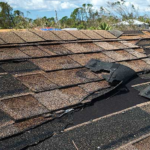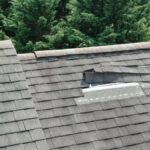Are Metal Roof Snow Guards Necessary?
September 17, 2024 | By Mike Gonet | Filed under: Blog

Metal roof snow guards are vital for preventing dangerous snow slides, reducing injury risks, maintaining property integrity, and ensuring roof longevity in heavy snowfall areas. They control snow release, distribute weight evenly, and comply with local codes—factors such as snow load capacity, roof pitch, and layout influence guard necessity. Proper installation, spacing, and maintenance are critical for efficient snow retention, using suitable mounting hardware. Regular inspection and debris clearance are pivotal for guard effectiveness. Understanding these aspects is fundamental for safeguarding roofs and properties.
Benefits of Metal Roof Snow Guards
Metal roof snow guards provide essential protection by preventing sudden and dangerous snow slides off the roof, reducing the risk of injury and property damage. When snow accumulates on a sloped roof, it can create a hazardous situation as it may slide off unexpectedly, posing a threat to people below and causing damage to structures, gutters, and landscaping. Snow guards are designed to hold the snow in place, allowing it to melt and gradually release in a controlled manner, decreasing the likelihood of avalanching snow.
Additionally, metal roof snow guards help distribute the weight of the snow more evenly across the roof surface. This weight redistribution can prevent excessive stress on specific roof areas, reducing the risk of structural damage or roof collapse. By installing snow guards strategically along the roofline, property owners can enhance the safety and longevity of their roofs, ensuring a more secure environment during winter months.
When Are Snow Guards Essential?
In regions prone to heavy snowfall or where snow accumulation is typical, using snow guards becomes essential to mitigate the risks associated with rooftop snow loads. Snow guards are necessary in areas where snow can accumulate and then suddenly slide off a roof, posing a danger to people below, damaging property, and causing structural issues. The weight of accumulated snow can lead to ice dams forming, resulting in water seeping into the roof and causing leaks. Moreover, the sudden release of snow from a roof can create hazardous conditions for pedestrians and vehicles.
Snow guards help to hold the snow in place, allowing it to melt or fall off in smaller, controlled amounts. By preventing large sheets of snow from sliding off all at once, snow guards help protect both the building and its occupants. In regions where heavy snowfall is expected, installing snow guards on metal roofs is crucial to ensure safety and prevent potential damage.
Factors to Consider
Considering the geographical position and typical snowfall patterns is crucial when determining a metal roof’s necessary snow guard configuration. Factors to ponder include:
- Snow Load: Understanding the maximum snow load the roof is designed to bear is vital. Heavy snow accumulation can pose a roof damage or collapse risk, necessitating snow guards to prevent sudden snow slides.
- Roof Pitch: The roof angle affects how snow accumulates. Steeper roofs tend to shed snow more quickly, but even steep roofs may require snow guards to control the snow-sliding process in certain conditions.
- Roof Layout: dormers, valleys, skylights, or other roof features can impact snow accumulation patterns. These areas may require specialized snow guard placement to ensure thorough protection.
- Building Codes: Compliance with local building codes and regulations is essential. Some areas mandate the use of snow guards on metal roofs based on factors like roof pitch, location, and historical snowfall data.
Installation and Maintenance Tips
When installing snow guards on a metal roof, meticulous attention to detail is essential to guarantee proper functionality and longevity. Start by determining the correct placement of snow guards based on roof pitch, snow load calculations, and roof layout. Ensure the snow guards are evenly spaced to retain uniform snow and prevent ice dams. Use appropriate mounting hardware designed for metal roofs to secure the snow guards properly without compromising the roof’s integrity.
Regular maintenance is vital to ensure the snow guards continue to perform effectively. Inspect the snow guards periodically for any signs of damage, such as loose screws or bent components, and make repairs promptly. Clear any debris or snow buildup around the snow guards to prevent water from backing up under the roof panels. Moreover, check for any corrosion on the snow guards and address it promptly to prevent further deterioration.
Following these installation and maintenance tips will help maximize the lifespan and performance of snow guards on your metal roof, providing valuable protection against snow and ice-related issues.





